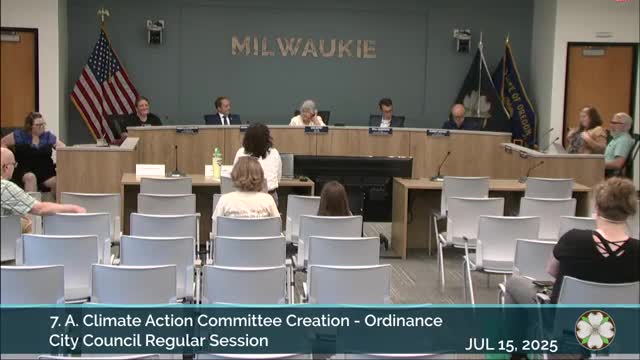Milwaukee Council Advances Tree Code to Enhance Urban Canopy and Environmental Equity
July 18, 2025 | Milwaukie, Clackamas County, Oregon
Thanks to Scribe from Workplace AI , all articles about Oregon are free for you to enjoy throughout 2025!

This article was created by AI using a video recording of the meeting. It summarizes the key points discussed, but for full details and context, please refer to the video of the full meeting. Link to Full Meeting
The discussion began with an emphasis on the importance of trees as multifunctional systems that enhance stormwater management, improve air quality, and bolster climate resilience. The proposed tree code seeks to integrate these natural assets into the city’s regulatory framework, ensuring that both public and private trees are protected and preserved. This initiative reflects a growing recognition that trees increase in value over time, much like other critical infrastructure such as roads and buildings.
Key goals of the tree code include the preservation of mature trees, the establishment of a minimum canopy retention requirement for new developments, and the promotion of equity in tree coverage across neighborhoods. For instance, developers will be required to retain at least 30% of tree canopy on private sites, with additional funds directed toward planting in low-income areas. This approach not only addresses environmental concerns but also aims to enhance the quality of life for all residents.
The council highlighted the iterative nature of the tree code's development, which has evolved through years of community engagement, technical analysis, and interdepartmental collaboration. Since the adoption of the Urban Forest Management Plan in 2019, the city has made strides in establishing a framework for tree management that aligns with housing and climate goals. The residential tree code, adopted in April 2022, extended protections to private trees while supporting residential development.
As the meeting progressed, officials outlined specific provisions of the tree code, including clear thresholds for when permits are required, preservation plans during construction, and mitigation measures for tree removals. A tiered fee structure based on tree size and context was also introduced, designed to incentivize tree retention while avoiding undue burdens on homeowners.
The council's commitment to sustainable and equitable tree management was evident, with plans to continuously monitor the code's effectiveness and adapt it based on community feedback and real-world outcomes. This living policy framework aims to ensure that Milwaukie not only preserves its urban forest but also fosters a resilient and livable community for generations to come.
As the meeting concluded, it was clear that the tree code represents a significant step forward in Milwaukie's environmental stewardship, balancing the needs of development with the imperative to protect and enhance the city's green infrastructure.
Converted from City Council Regular Session 07/15/2025 meeting on July 18, 2025
Link to Full Meeting
Comments
View full meeting
This article is based on a recent meeting—watch the full video and explore the complete transcript for deeper insights into the discussion.
View full meeting